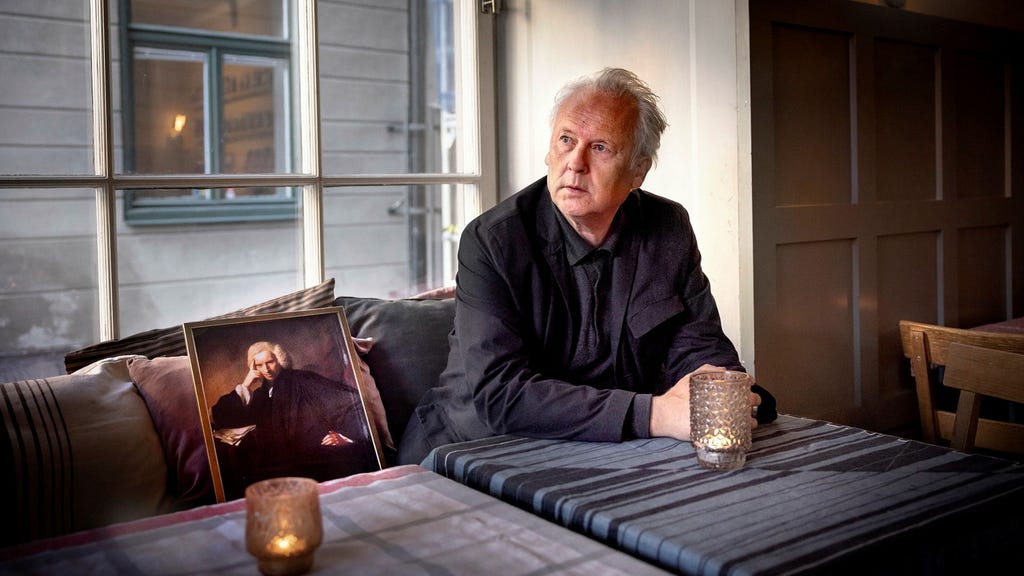Laurence Sterne’s ”Tristram Shandy,” a sprawling, digressive novel published in installments between 1759 and 1767, presents a unique challenge to modern readers. Its fragmented narrative, bawdy humor, and obscure references, while groundbreaking for their time, can feel daunting to those unfamiliar with 18th-century literary conventions. This novel, considered a precursor to modernist and postmodernist literature, continues to fascinate critics and scholars for its experimental form and its exploration of the nascent modern subject. However, its accessibility remains a key question, even with the benefit of a new translation by Klas Östergren.
The novel arrived during a period of rapid expansion in the publishing industry. Between 1700 and 1740, the number of novels published annually in Britain increased dramatically, a trend that continued until the end of the century. This burgeoning literary landscape, while exciting, was also met with criticism from contemporaries who lamented the perceived decline in quality compared to the works of early novelists like Henry Fielding and Samuel Richardson. It was into this context that Sterne, a relatively unknown clergyman, launched his ambitious and unconventional work, financing the publication himself and meticulously overseeing every aspect of its production.
”Tristram Shandy” quickly became a sensation, catapulting Sterne from obscurity to international fame. He traveled widely, mingling with literary luminaries like Voltaire, and fully embraced his newfound celebrity. The novel’s success, however, raises the question of its actual readership. While its reputation as a landmark work is undeniable, its dense prose, replete with puns, Latin and French quotations, and digressions, makes it a challenging read even for dedicated literary enthusiasts. Its influence on later writers like Virginia Woolf and James Joyce is widely acknowledged, but its appeal to a contemporary audience hinges on a willingness to grapple with its idiosyncratic style.
The novel’s purported aim is a fictional autobiography, yet the narrator, Tristram, remains elusive. The reader learns very little about him directly, as the narrative focuses instead on a cast of eccentric supporting characters: Tristram’s father Walter, his Uncle Toby, and their servant Susannah, among others. Their conversations and interactions drive the plot, or rather, the lack thereof. Discussions range from the trivial to the philosophical, touching upon naming conventions, noses, and a myriad of other topics. This digressive structure, while seemingly modern in its fragmentation, also harkens back to earlier literary forms like the picaresque novel and the anecdotal writings of antiquity.
Klas Östergren’s new Swedish translation attempts to grapple with the complexities of Sterne’s prose. He retains the original’s erratic punctuation while employing a more straightforward Swedish than previous translations. This approach results in a remarkably fluid text that captures the informality of Sterne’s writing while mitigating some of the more obscure wordplay. Östergren’s translation, lauded for its balance between fidelity to the original and readability, offers a renewed opportunity for contemporary readers to engage with this challenging and influential work. His previous success with translating Ibsen suggests a sensitivity to complex literary texts, and his rendering of ”Tristram Shandy” arguably represents an even greater achievement due to the inherent difficulty of Sterne’s prose.
Ultimately, the question remains whether the effort required to read ”Tristram Shandy” is worthwhile. It is undeniably a demanding text, often tiresome in its relentless humor, and perhaps more intriguing in theory than in practice. However, for those interested in the evolution of the novel, the development of narrative techniques, and the emergence of the modern self, ”Tristram Shandy” offers a unique and invaluable perspective. It is a challenging but rewarding journey into the heart of 18th-century literary experimentation, a journey that may ultimately reshape our understanding of what fiction can achieve. Despite its difficulty, ”Tristram Shandy” offers a glimpse into the birth of the modern novel and the complexities of human consciousness, a reward that arguably justifies the effort required to navigate its labyrinthine prose.














